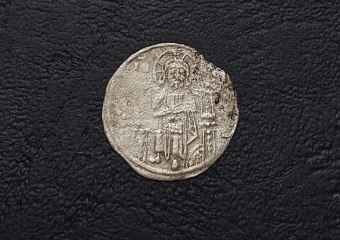Archaeologists discovered two new inscriptions in Aquae Calidae
The first phase of the excavations in the archaeological site of Aquae Calidae for the summer of 2019 has completed. It initiated a whole new concept in the study of the ancient thermae near Burgas.
While the areas have revealed in 2018 were related to a design change in the concept for new museum-replica of a Roman bath, this year the efforts of archaeologists are concentrated in the northeast end of the baths. In this area is the northeastern apoditerium discovered in 2012, but unexplored so far, as well as the space east of it.

To the east of the architectural structures, the team of researchers again found that the medieval layer from the XI century developed directly over the early Byzantine. According to the head of research Assoc. Prof. Dr. Dimcho Momchilov, this is evident from the large number of finds - coins and ceramics, dating from the same period.
Several levels have been discovered in the northeastern apoditerium, including the most recently used bathhouse from the 13th century and the connected three outflow channels to the south and east to southeast. Fire and use of the premises in different building configurations were monitored with at least four alterations.
 Undoubtedly, the most interesting findings this year are two ancient inscriptions discovered from the re-used arias of an ancient temple. The texts are in Greek and Latin and currently expect to be read. Archaeologists hope that they will receive specific information about the early history of the site and its population. Among the other finds, ceramics and coins from the early Byzantine era and from the XI-XIII centuries dominate again.
Undoubtedly, the most interesting findings this year are two ancient inscriptions discovered from the re-used arias of an ancient temple. The texts are in Greek and Latin and currently expect to be read. Archaeologists hope that they will receive specific information about the early history of the site and its population. Among the other finds, ceramics and coins from the early Byzantine era and from the XI-XIII centuries dominate again.
The survey in Aquae Calidae is carried out by Regional historical museum Burgas and for consecutive year are fully funded by the Municipality of Burgas. In the research team of Assoc. Dimcho Momchilov participate Assistant Professor Martin Guzelev and students from the University “Prof. Dr. Assen Zlatarov".


Comments
comments powered by Disqus